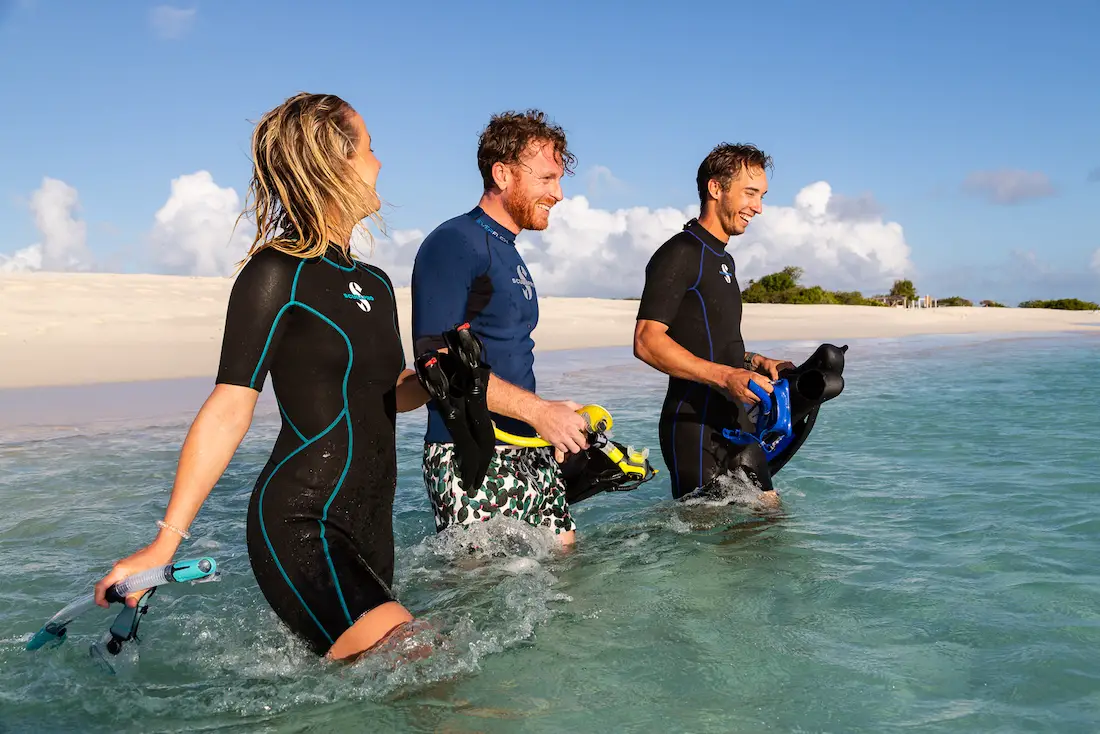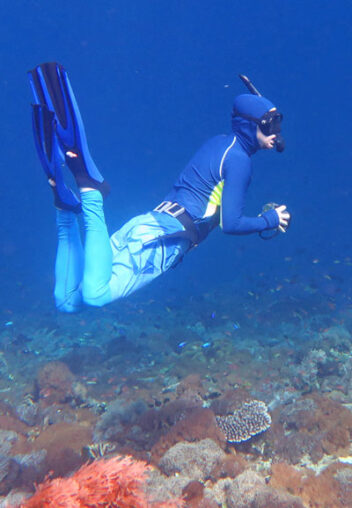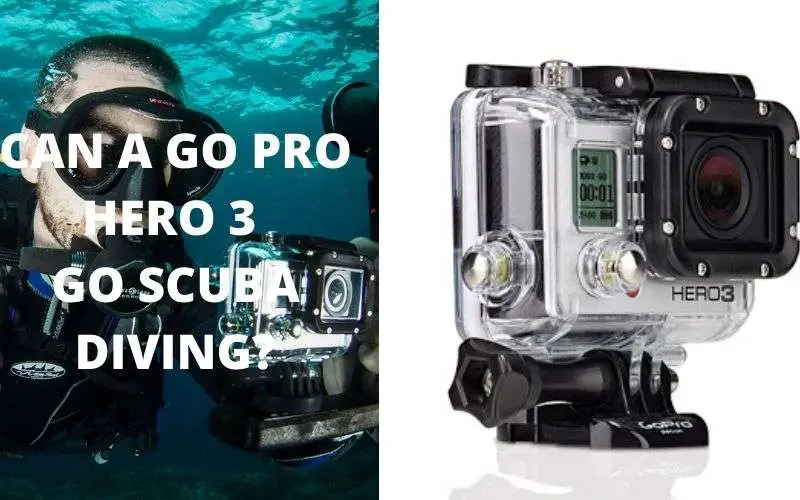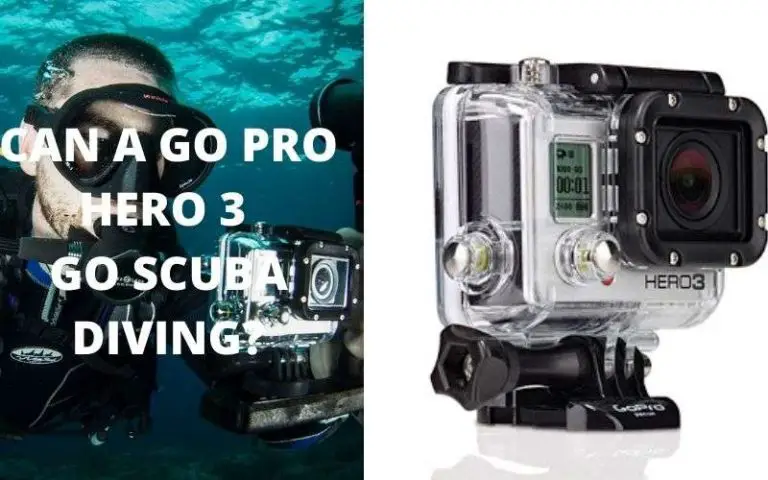
Are you tired of the endless sunscreen application struggle on your beach excursions? It’s time to explore a more convenient option for your snorkeling adventures: the versatile rash guard.
While it may not be mandatory attire, these garments provide a range of valuable benefits, including effective UV protection, rash prevention, and a shield against pesky jellyfish stings.
In this article, we’ll thoroughly examine the pros and cons of incorporating a rash guard into your snorkeling gear, empowering you to make an informed decision that will enhance your underwater experiences and keep you protected throughout your aquatic explorations.
Benefits of Wearing a Rash Guard for Snorkeling
Here are some of the benefits of wearing rash guards for your snorkeling adventures.

Sun Protection
Rash guards act as your first defense against the sun’s potent UV rays, which are intensified when you’re in the water. Equipped with UPF ratings, similar to SPF in sunscreen, they effectively shield your skin. With a UPF of 50, only 2% of UV radiation reaches your skin, reducing the risk of burns and long-term skin damage, including skin cancer.
Save on Sunscreen:
By covering a significant portion of your body, rash guards eliminate the need for constant sunscreen application. You’ll only need sunscreen on exposed areas like your head, hands, and feet, resulting in substantial sunscreen savings.
Skin Protection
Snorkelers often encounter rough underwater terrain, like corals and rocks, posing risks of cuts and abrasions. Rash guards, as the name suggests, guard against these potential injuries, ensuring a more enjoyable exploration. They also act as a barrier against jellyfish stings.
Prevents Chafing
Rash guards are crafted from smooth, soft materials that reduce friction, preventing uncomfortable chafing caused by repetitive motion or contact with equipment like life jackets or fins. This keeps your focus on the underwater beauty.
Thermal Protection
While tropical waters may be warm, extended immersion can lead to a body temperature drop. Rash guards offer a thin layer of insulation, suitable for maintaining body warmth, especially in cooler water currents or variable temperature regions.
Visibility
Safety is paramount, and rash guards designed in bright colors or with reflective patterns enhance visibility in the water. This is crucial when snorkeling in areas frequented by boats or jet skis, reducing the risk of accidents.
Versatility
Rash guards aren’t limited to snorkeling; they find use in surfing, swimming, kayaking, paddleboarding, and more, protecting your skin from various elements.
Potential Downsides of Rash Guards

Limited Thermal Protection
Rash guards primarily offer sun and abrasion protection, not warmth. In colder water or extended submersion, they can’t match the insulation capabilities of wetsuits. Cold water exposure without proper insulation can lead to hypothermia.
Potential for Overconfidence
The sense of protection provided by a rash guard might lead to overconfidence, causing snorkelers to underestimate certain risks, like marine animal stings or sharp objects. Awareness of surroundings is essential for safety.
Can Get Entangled
In specific underwater environments, sharp objects can snag or tear the fabric of a rash guard, potentially causing issues. Careful navigation is crucial in regions with dense underwater vegetation or complex coral structures.
Fit Issues
Finding the right fit can be challenging. A loose rash guard may create unnecessary drag, while a tight one can restrict movement, cause discomfort, or lead to chafing or skin irritation. Trying on multiple sizes and considering factors like arm length and overall comfort is essential.
Verdict: Are Rash Guards Necessary for Snorkeling?
Safety and comfort should always be priorities while snorkeling. Rash guards offer substantial benefits, especially sun protection, which is vital for long-term skin health. They provide a compelling reason to wear one during snorkeling, given that water magnifies the sun’s effects.
However, it’s essential to approach this decision holistically, considering the potential downsides, such as overconfidence and fit issues. Always stay aware of your surroundings and be cautious in your snorkeling environment.
Conclusion
Wearing a rash guard offers a range of significant advantages, with sun protection being a standout benefit. When it comes to snorkeling, this versatile piece of gear is highly recommended due to its ability to shield your skin from harmful UV rays. Beyond sun protection, a rash guard also provides thermal insulation, which can be especially beneficial in cooler waters.
Its snug fit reduces drag in the water, enhancing your overall snorkeling experience by allowing for effortless movement. Additionally, rash guards help prevent irritation and chafing caused by abrasive equipment or underwater elements, promoting comfort and prolonged enjoyment during your snorkeling adventures.
Furthermore, the advantages of wearing a rash guard extend to safety considerations. The added layer of protection minimizes the risk of encountering jellyfish stings or scratches from coral formations, which can be painful and potentially lead to infections.
All in all, when embarking on a snorkeling expedition, incorporating a rash guard into your gear ensemble not only ensures sun safety but also enhances your overall well-being and enjoyment of this captivating underwater activity.












